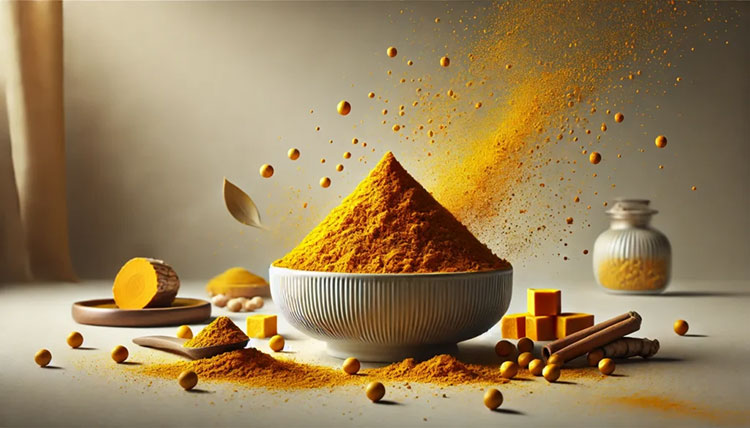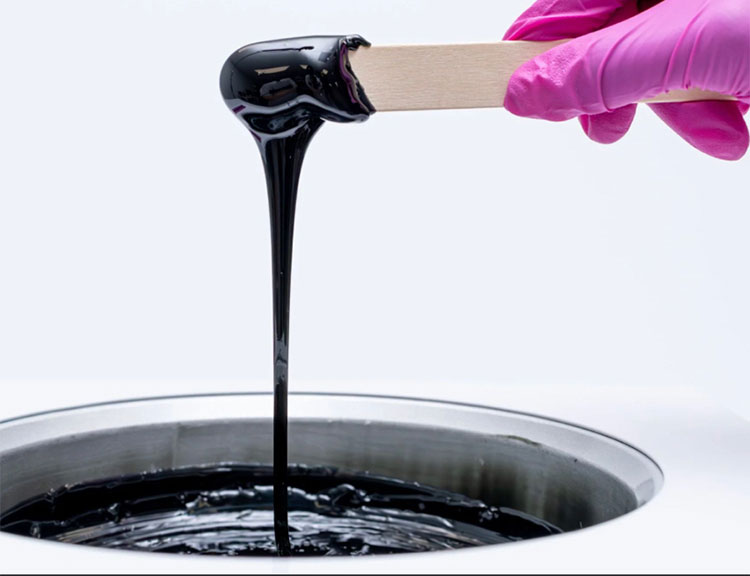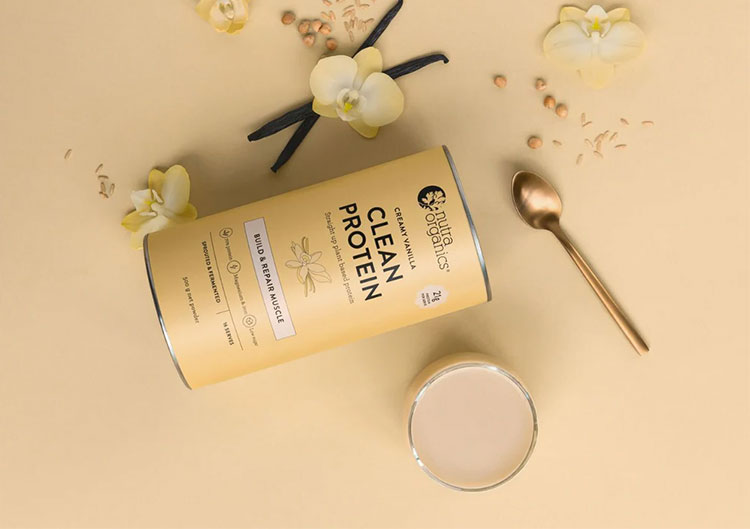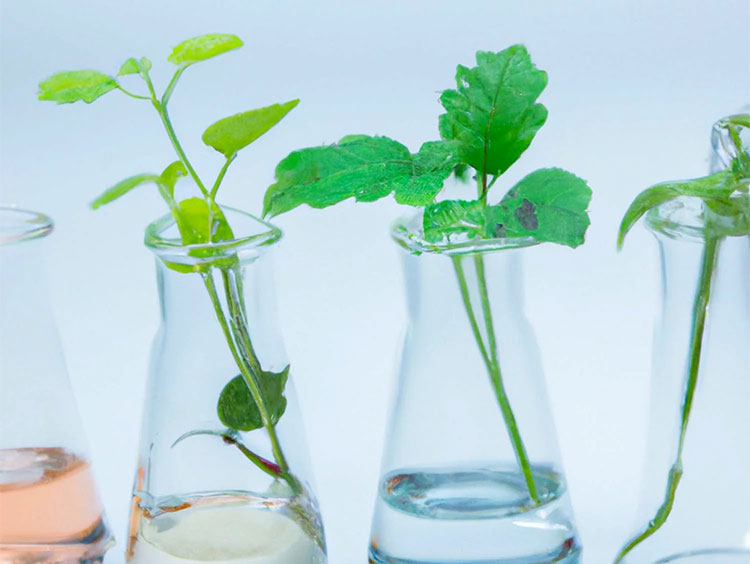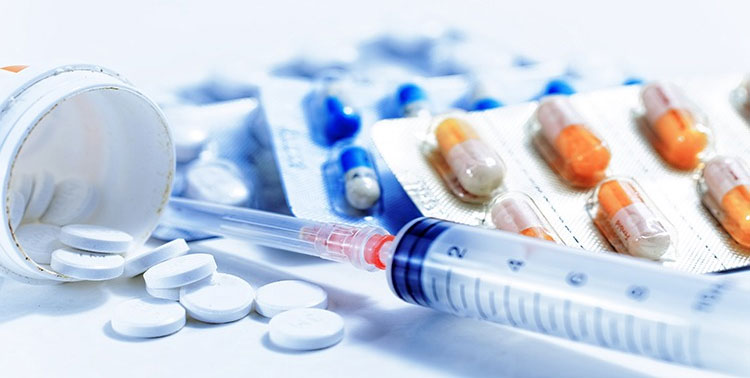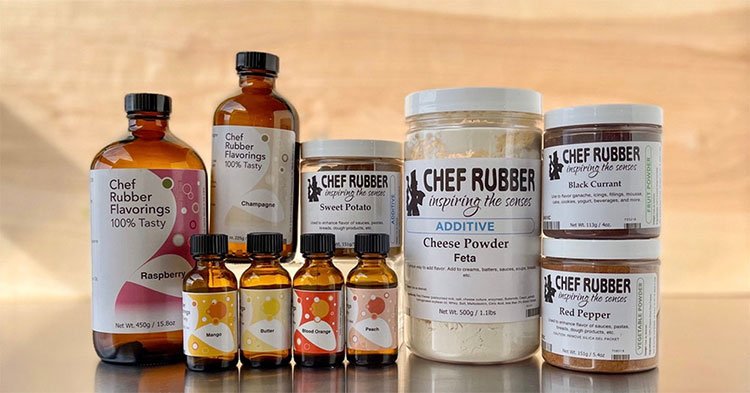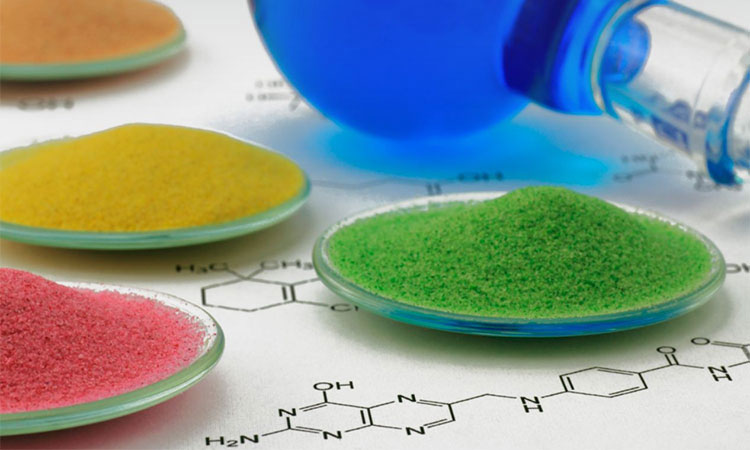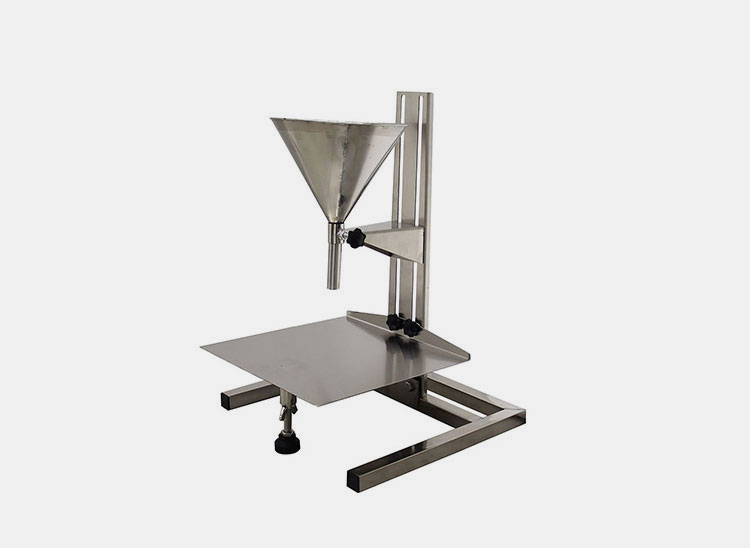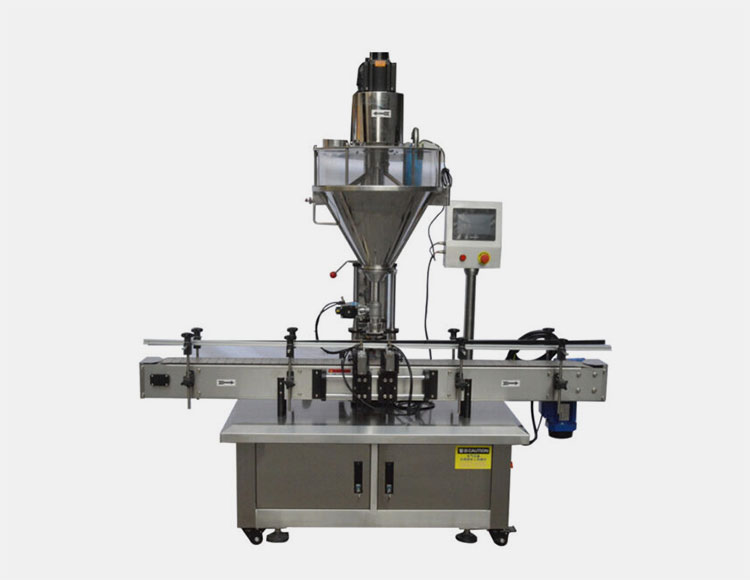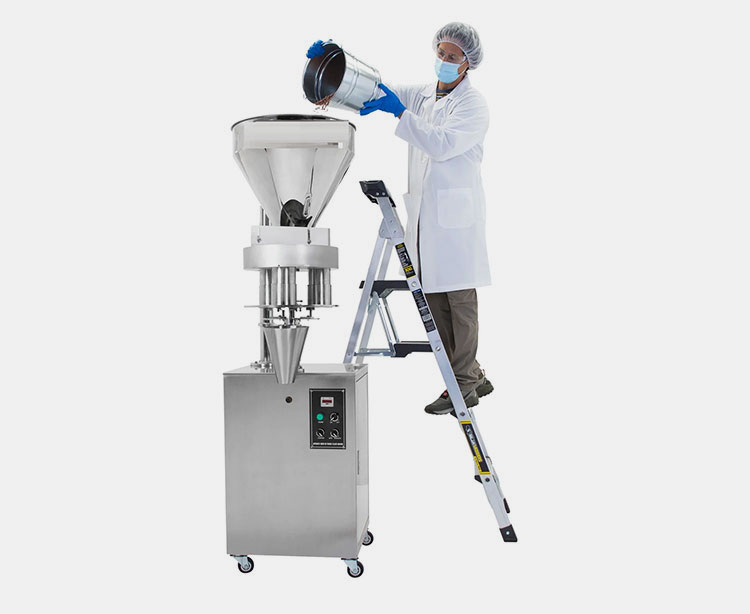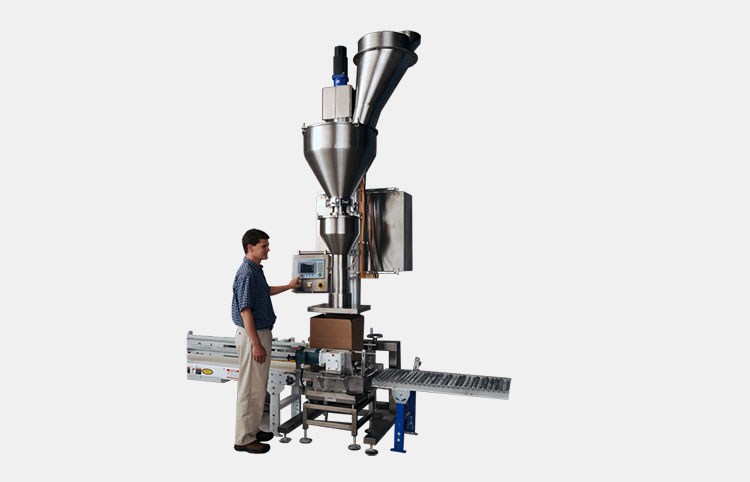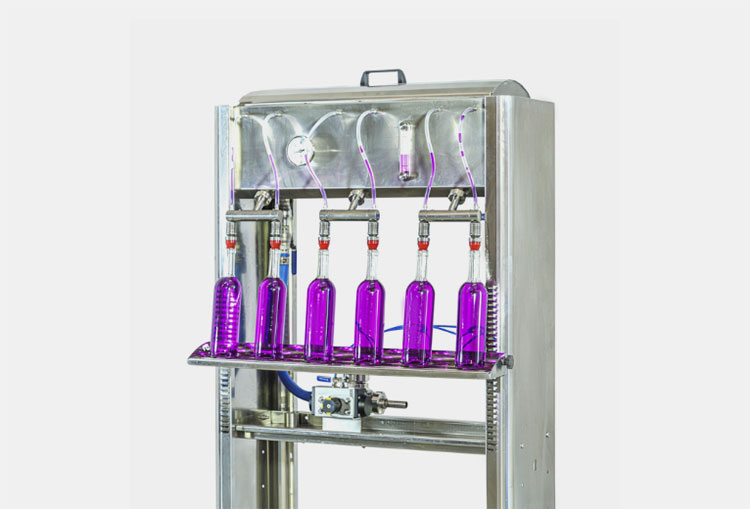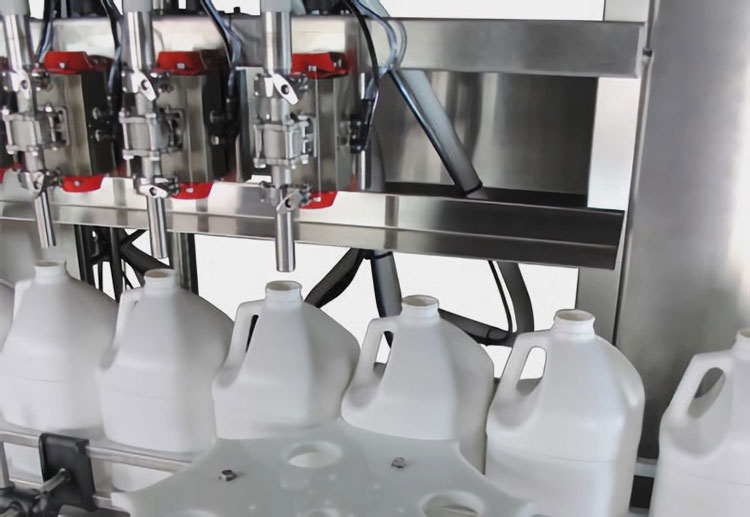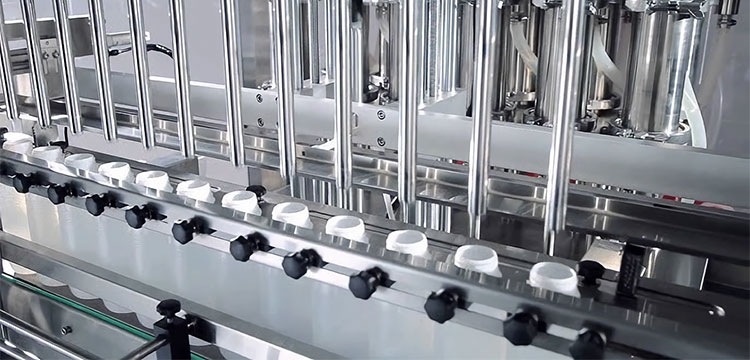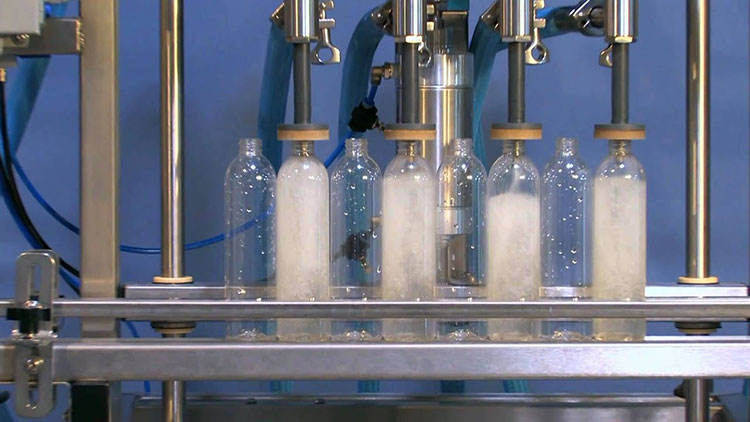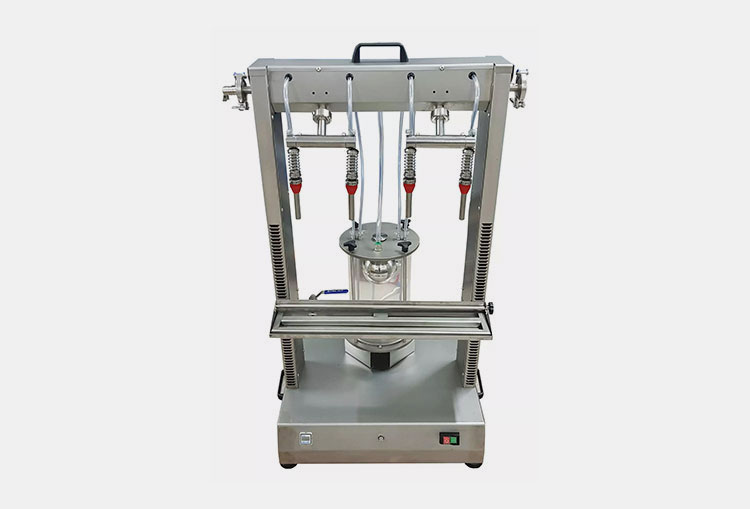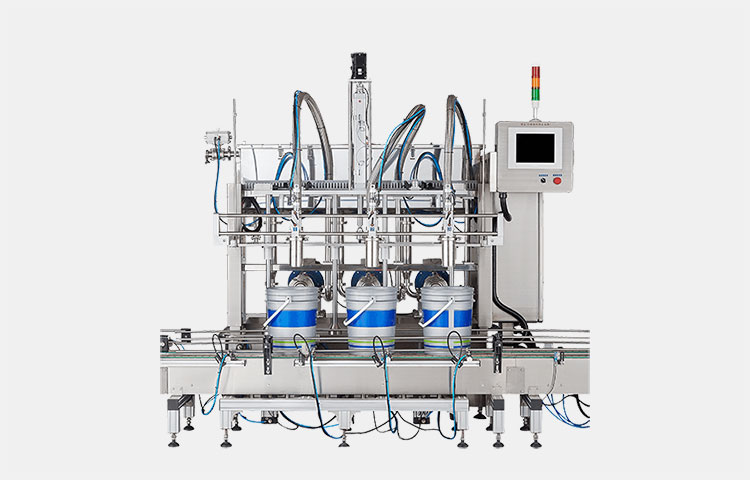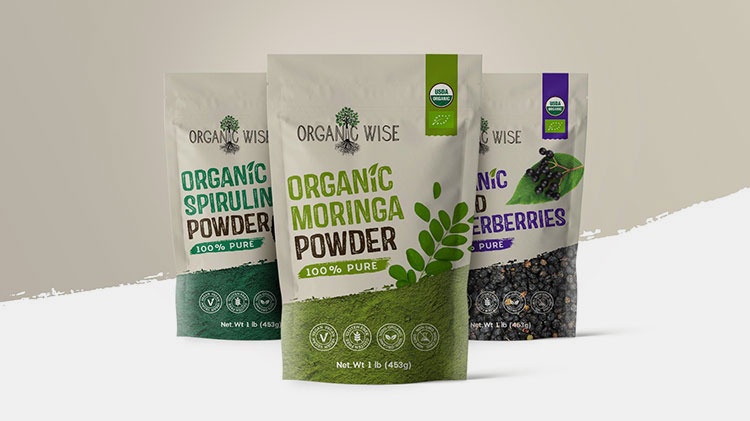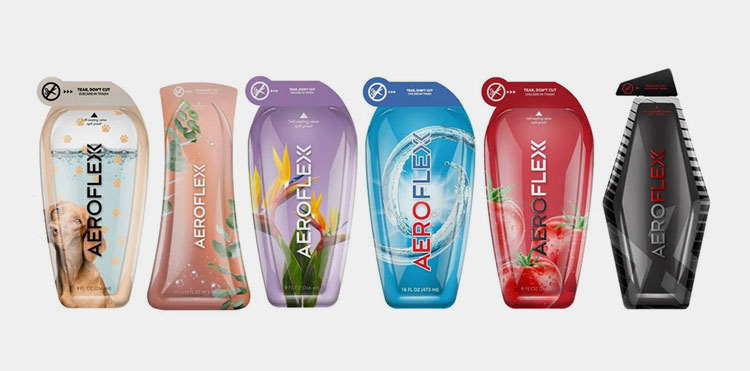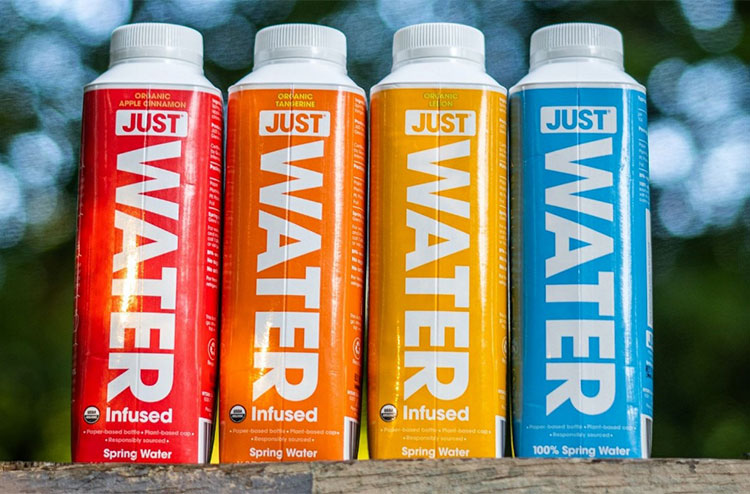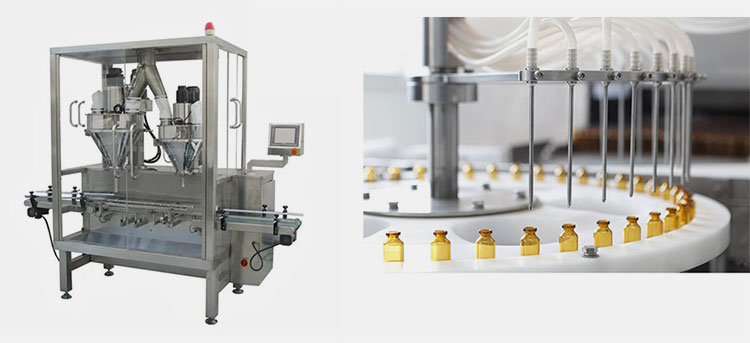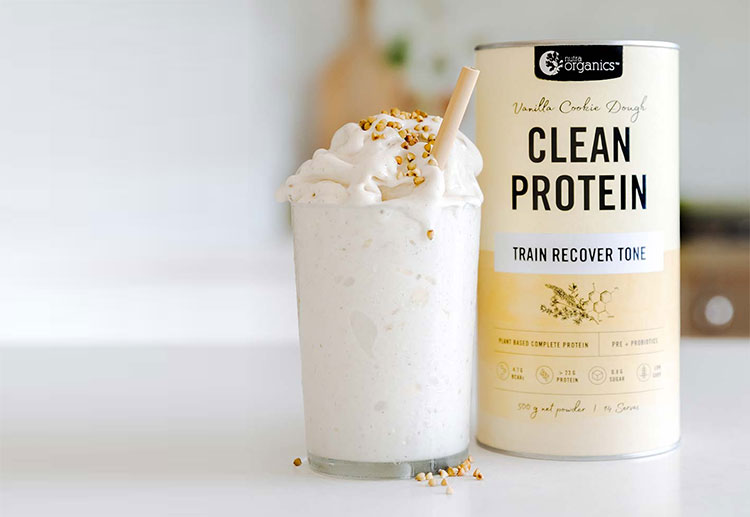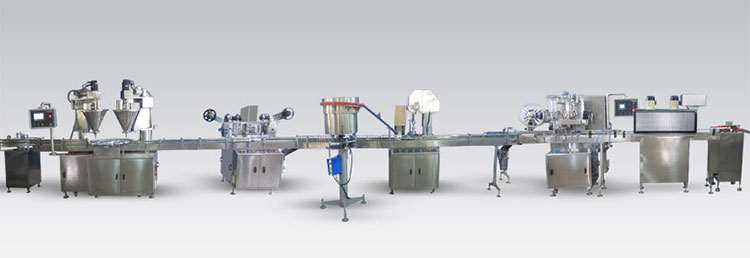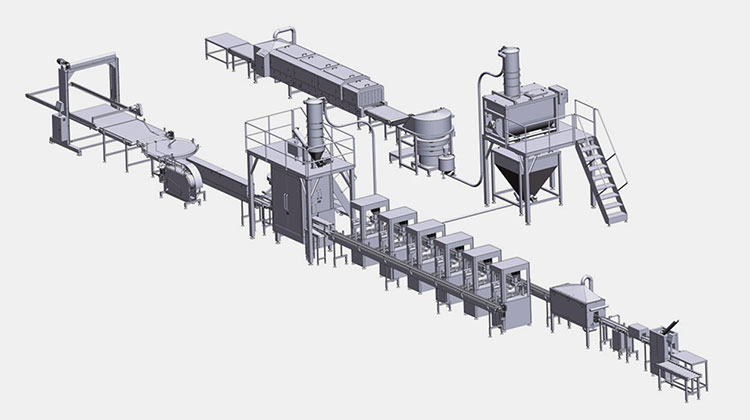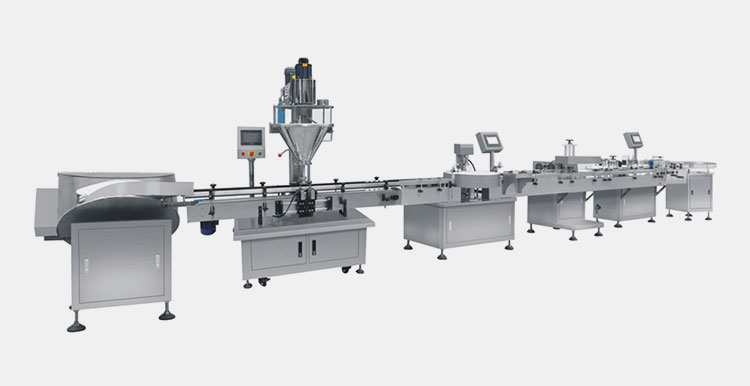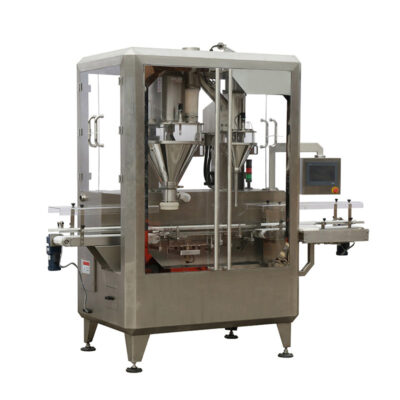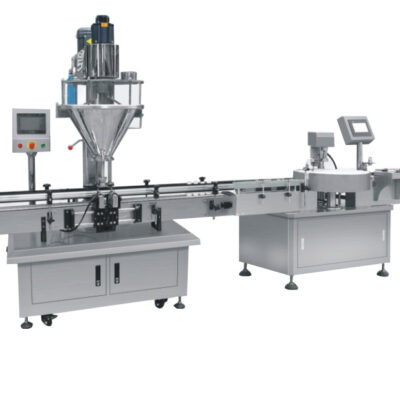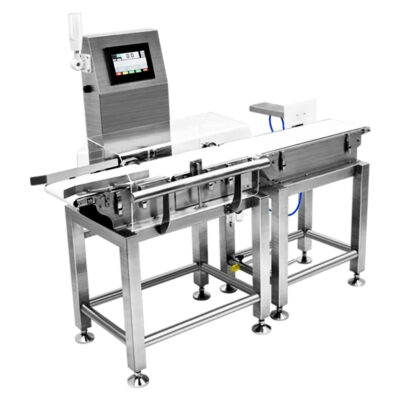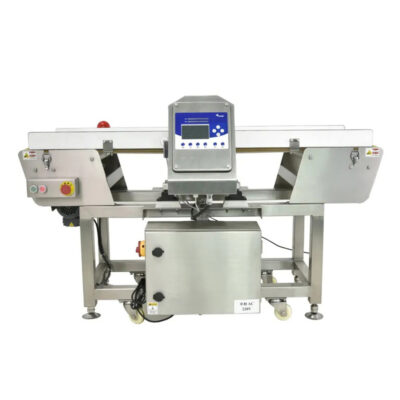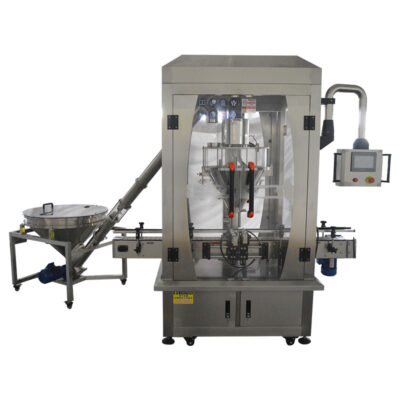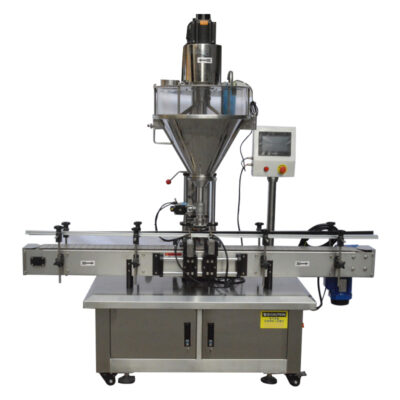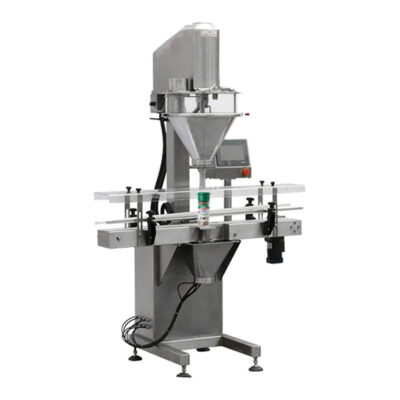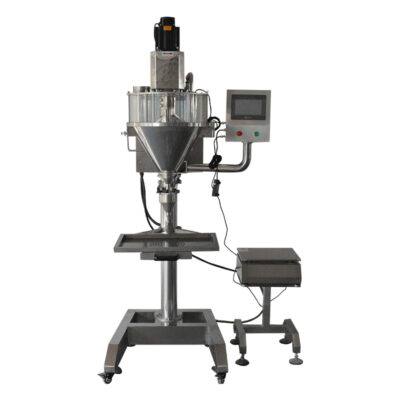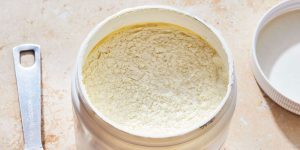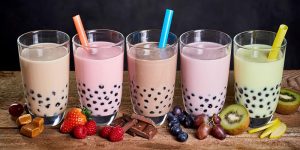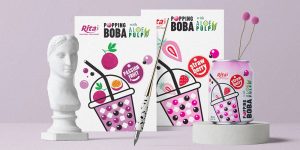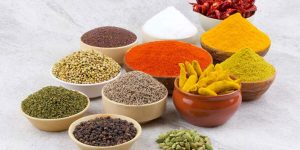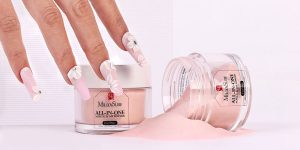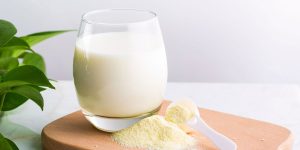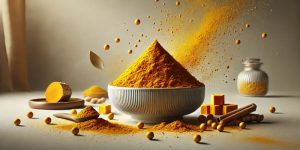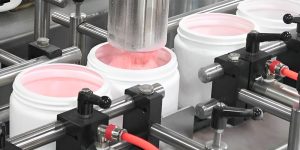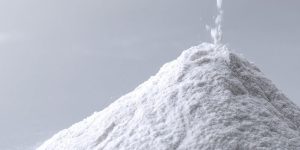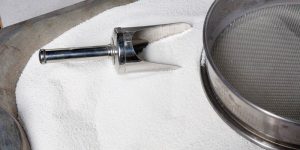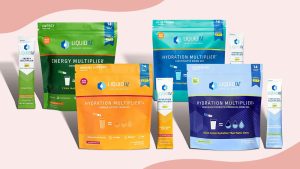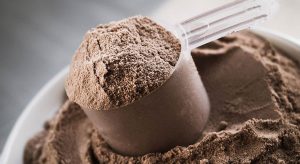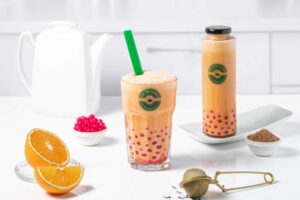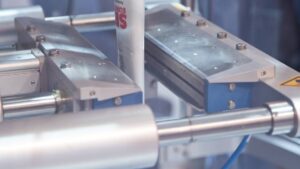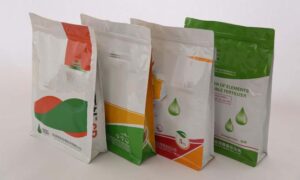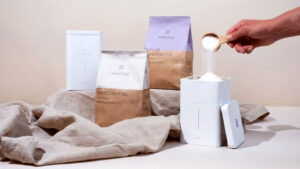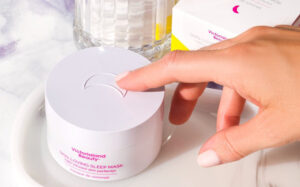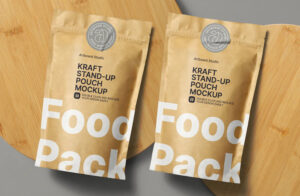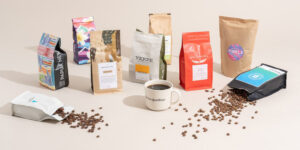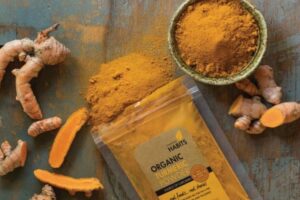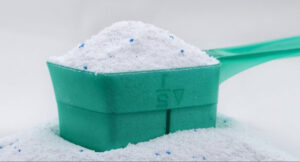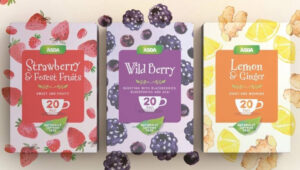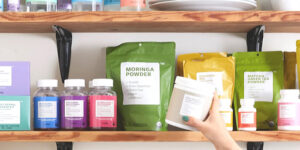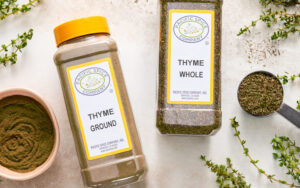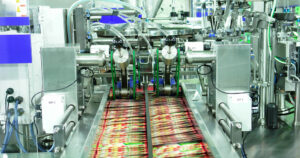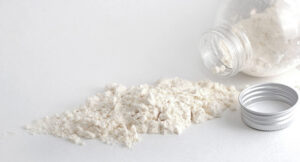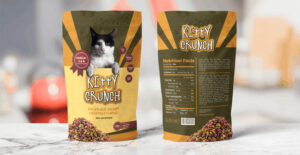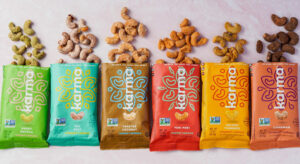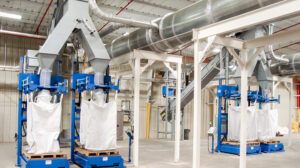Powder Vs Liquid Filling: Which Suits Your Business Best?
Are you new in the business of filling and packaging? Indeed, the filling of various material states mostly requires a greater understanding. It is essential to select the right machine, packaging materials, filling types, temperature, etc.
In the blog, powder vs liquid filling, we have discussed the major differences and machineries related to the particular type. By the end, we ensure that you will be able to pick the ideal machine that suits your business best. Please look into the main points and objectives of the topic just right below.
1.What is powder? What is powder filling?
Powder- Picture courtesy: Indian Food Exporters
Powder itself is a crucial element behind every formulation and composition. In terms of pharmaceuticals, it is the combination of active pharmaceutical ingredients as well as excipients. Therefore, it can be implemented in your application depending on requirements.
On the other hand, powder filling is the method of dispensing the desirable powder in a specific concentration into the assigned packaging types. For example, conventionally the powder filling was done by utilizing manual handling. With time, the machines such as automatic, and semi-automatic powder filling machines are mainly used for this task.
For a very small scale, the powder filling is still done using manual machines. For a moderate production line, you will need semi-automatic, and as the production batches get larger and require high automation, automatic machines are used.
2.What is liquid? What is a liquid filling?
Liquids- Picture courtesy: blush gloss genius
The liquid in terms of medicine is the pourable formulation. These are mainly formed by the involvement of two or more active ingredients that are mixed and homogenized thoroughly to form an even and miscible product. The liquid provides a phase for various ingredients to come and dissolve efficiently. Liquid is mainly of two types: monophasic and biphasic.
The monophasic liquid name shows that here the medium itself is homogeneous and is formed by incorporation of liquid or one phase only. The bi-phase liquid is formed by the combination of a two-phase system, for example, it is formed by association of liquid with solids.
The liquid filling is the method and packaging process that is involved with the filling of liquid formulations and vehicles into the respective packaging materials. The filling process involves specific filling nozzles which are mainly designed to deal with liquids of various consistencies without leakage or spillage.
In the previous processes, the liquid filling took place by utilizing a manual cone-shaped hopper which is inserted into the bottleneck to fill the desirable volume. Today there are various innovative machinery have emerged to bring this task in a fraction of a minute.
3.Powder Vs Liquid Filling: Which Suits Your Business Best?
There are certain distinguishing points that elaborates the main difference between powder and liquid filling machines. We have talked about those points just right below:
Characteristics of powders
Powder filling- Picture courtesy: Nutra organic
The characteristics of powders include:
| Particle size | The particle size and shapes help in the knowing characteristics of powders such as its flow rate, density, and rate of dissolution. It is essential to determine mass and density.
With the help of knowing the bulk density, you can pick the right time for the powder filling unit. Along with the right machine, you can assess the right packaging container. Therefore, it will help in minimizing the production cost as well as help in estimating the functional properties of the powders. |
| Flow rate | Every powder has its own flow rate. Some flow steadily while some are lumpy in texture.
Therefore, it is important to determine the flowability to obtain better powder filling without the risk of lumps and machine damage. Several tests assess the flow rate such as angle of repose, finger test, settle test, or compression test. The purpose behind determining the flow is to estimate the slop of powder in the hopper, what ideal machine to install, whether is there any aid required in the machine or not, etc. |
| Hygroscopicity | The powders have the property to adsorb, absorbing the water or moisture content. If the level is hygroscopicity is less than 10% then the powder is not hygroscopic in nature, otherwise, it is hygroscopic. Such as magnesium hydroxide, milk protein, nutritional powder, calcium chloride, etc.
If the powder has a high hygroscopic level then it makes a poor flow ratio, can disturb the manufacturing process, and can form agglomerates, clogging, etc. |
| Dissolution | The powder has different dissolution rates, some are more soluble some need aid to induce the dissolution such as temperature, high mixing speed, etc. It is mainly required to determine in the industrial setup when the powder has to encounter with liquid phase or aqueous medium. |
| Wettability | This is the rate at which powder absorbs the water surface without the need for agitation. There are certain factors that have impacts on wettability such as pressure, temperature, hygroscopicity, particle size, etc. |
| Dispersibility | This is the property that facilitates the powder dissolution in water upon stirring. It is involved with temperature, the size of powder particles, etc.
Various products like milk protein, nutraceutical drinks, and beverages industries look for this characteristic to have greater dispersibility when producing the formulation. |
Characteristics of liquids
Liquid filling- Picture courtesy: Roger’s Garden
The characteristics of liquids are described below:
| No shape | This is the prime property of the liquids that it does not have any specific shape except they are settled and stored in a container. It is mainly expressed in mL and can be fixed in various packaging types. |
| Cohesion | This is the significant property of liquids that they mainly attract like molecules and bond together. Such as in the case of water, each molecule is firmly bound to another water molecule with the help of hydrogen bond. |
| Adhesion | Each particle of the liquid is drawn with others to develop a new liquid particle by the property of adhesion. For example dew. |
| Viscosity | The important characteristic of the liquid where it resists flow. Various liquid types are possessing alter viscosities such as if the liquid is thin, it is less viscose, and thick liquids with high viscosity. Such as water and syrups. |
| Tensile force | This is another property where it is related to preventing liquid surfaces from getting destabilized against external forces and acquiring a level. For example in the case of mercury, the high tensile force is exerted by the liquid. |
| Transformation | When you induce heat to the surface of liquids, their molecular bonding ruptures and they turn to transform its shape. For example, boiling to steaming. If you lower the temperature, it converts its shapes from liquids to solids. Therefore, upon high temperature, it converts to vapors, then gas or evaporated form. |
Applications
The powder VS liquid filling has different important applications in the broader site of the industries. It is included in the manufacturing, filling, and packaging sectors. We have highlighted some very important regions, such as:
Pharmaceutical industry
Pharmaceutical Industry-Picture courtesy: DCAT value
Powder filling is used in the pharmaceutical sector during formulation, filling, packaging of raw materials, and formation materials of medicines. This is involved in tablet making, capsule making, syrups, emulsions, topical powders, antibiotics, etc. Liquid filling in pharmaceuticals is very important when it comes to dealing with manufacturing various solid dosage formulations, and liquid preparations such as syrups, emulsions, ophthalmic preparations, IV solutions, etc.
Food industries
Food industries- Picture courtesy: Chef rubber
The powder filling in the food industry is hooked to products like spices, protein powders, grains filling and packaging, salts, sugars, instant mixed, flavoring, various seasonings, etc. It is used to fill an optimized concentration of material into specified assigned packaging. Whereas, liquid filling is required for filling various energy drinks, beverages, liquid sauces, taste enhancers, honey, oils, etc hence perfect volume can be transferred when it comes to utilized liquid filling equipment.
Chemical industry
Chemical industry- Picture courtesy: Vetter tech
Various toxic and reactive chemical powders are dispensed in specific jars, bulk bags, containers, etc by utilizing the powder filling process. It includes organic, inorganic, bleaches, salts, raw chemicals, finished products, etc. On the other side, liquid filling is required in the filling and packaging of chemical solvents that are acidic, alkaline, neutral, lubricants, buffers, etc.
Machines
When it comes to talking about powder filling machines, various types sizes, and styles are emerging in today's market. They are mainly constructed related to your product type and your specific requirements.
Therefore, when you are purchasing the machine, you should know the basic points such as your per-day production, what is the nature of the particle, etc.
Whether you belong to the food industry chemical industry or nutraceutical industry, powder and liquid filling machines play a paramount role in the filling.
Let's have a look at the specific types of powder and liquid filling machines that are popular and frequently used in the various sectors of the packaging world.
Powder Filling Machine
The various types of powder filling machines are:
Gravity powder filling machine
Gravity powder filling machine
By its name, you can easily predict the working principle of gravity filling machine. Absolutely true, this machine mainly works from the upward to the downward direction of the powders.
In this machine, no extra energy or force is utilized, rather the implemented force is the gravitational force.
Therefore, whenever you are encountering materials with a high flow ratio, this machine is an ideal option. This is a cost-effective solution and is available in various sizes.
Auger powder filling machine
AIPAK auger powder filling machine
This is a very common machine and generally comes to mind whenever you are talking about powder filling.
Here, the machine is designed with an auger. Inside the auger, there is an auger screw that continuously agitates and lets the powder material flow towards the filling nozzle.
This machine is ideal for free-flowing and semi-free-flowing materials. Because, with the help of an auger screw, you can attain the specific dispensing of the powder with an accurate filling. The following machine is ideal for filling the various containers jars pouches sachet, and other packaging types with powder material.
Volumetric Powder Filling Machines
Volumetric Powder Filling Machines- Picture courtesy: technopack
This is the newly advanced featured machine that allows the powder filling into the specific packaging type by considering the specific volume. Here the machine is designed with a volumetric cup, piston, or a pump, that is specially designed to measure and dispense the specific volume of powders.
This machine is the best solution to attain a precise and accurate level of required material. The following type is mainly used in small as well as large industrial sectors to avail seamless workflow for products like personal care, foods, and pharmaceuticals. Because the material used in this machine is accompanied by already-defined density and flow characteristics.
Net Weight Powder Filling Machines
Net weigh powder filling machine- picture courtesy: spee dee
For the powder with variable densities and flow characteristics, net net-weight powder filling machine is used. The machine is capable of dispensing an accurate weight of the powder just by measuring the particular weight loaded over the measuring cell.
For example, if you require 5kgs, the machine is capable of measuring the exact volume of five kg by showing it over the digital display screen.
The machine is capable of dispensing powders ranging from small to large volumes and promises you that the required task is carried out in a predefined and accurate manner.
Liquid Filling Machine
Based on the filling technology, the liquid filling machines are divided into the following types:
Gravity liquid filling machine
Gravity liquid filling machine- Picture courtesy: LOM
Like the gravity powder filling machine, the liquid filling machine also helps in the dispensing of the specific volume of formulation by utilizing the force of gravity. Indeed, this is a good and controlled machine which expense a little and produces good filling tasks. The liquid solution from the hopper flows downward toward the filling nozzle for the final delivery.
Pump liquid filling machine
Pump liquid filling machine- Picture courtesy: APACKS
This type of liquid filling machine is designed with a volumetric pump. This is responsible for exerting the pressure required for transferring the liquids from the hopper to the packaging material. There are two types of pumps used for the filling task. For example, a peristaltic pump that utilizes a flexible passage for liquid transportation and is used for sensitive and delicate solutions. The rotary pump uses a lobe pump that traps the liquids and is mainly used for thick and viscous solutions.
Piston liquid filling machine
Piston liquid filling machine
For thick and viscous solutions, the piston liquid filling machine is recommended. The machine is capable of sucking the liquids into the cylinder or tank and then drawing them toward the packaging material based on the piston working principle. Based on the stroke length, you can modulate the filling volume.
Overflow liquid filling machine
Overflow liquid filling machine
This machine gives you high production speeds by simply filling the set of bottles with an equal volume, instead of a single bottle. Rather than measuring the volume of formulation or weighing the packaging required, the filling nozzle is designed with a seal, that helps in indicating the filling level of liquids in the bottles. Once the bottles are filled, the excessive liquid goes back and recirculates for other sets of bottles. In this machine, the filling nozzles get emersed in the container to fill up to the required level.
Vacuum liquid filling machine
Vacuum liquid filling machine- Picture courtesy: OPTIMA
The works by simply creating the vacuum inside the container. This type of filler is mainly used to protect the formulation against microbial invasion. The working of the machine is almost similar to the above machine instead once the liquid reaches the required level, the release of the vacuum makes the other space air-free.
The filling nozzle is composed of two tubes, once tube ensures the constant filling of the formulation. While the other tube keeps drawing the air present inside the container. Therefore, the final packaging is airtight sealed and secured with caps. This machine is suitable for free-flowing liquids.
The vacuum itself minimizes the chances of a favorable environment inside the container when the liquid is already filled. Therefore, you can expect greater shelf life when the formulation is filled by a vacuum machine.
Net weight liquid filling machine
Net weight liquid filling machine- Picture courtesy: KWT
This is a simple machine, and its working and measurement criteria are different from other liquid filling machines. The main work is based on the estimation of filling weight by using the weigh-scale platform, once you keep the packaging material and fill the solution, the display indicates the required volume.
The machine setting ensures that the weight of the bottle or any packaging material is nullified. In this case, it can only be able to pick the volume of liquid dispensed in the bottle. This machine is suitable for filling free-flowing liquids. It can fill the liquid with small to large volumes.
Packaging
Powder filling – Picture courtesy: Stan Brand
Powder filling mainly comes in a broad series of packaging materials which includes jars, containers, sachets, pouches, premade pouches, pillow packaging, stick-packaging, tote bags, and bulk bags, Moreover, it can be packed with materials made up of papers, laminated layers, aluminium packaging, plastic materials, etc. because they are available in a solid particles state, therefore, it has a positive side for packaging as it can be settled safely in any type and style of packaging.
Liquid filling packaging- Picture courtesy: Aeroflex
Conventionally, the liquid filling is hooked to bottles first. It is still a highly trustable way for liquid packaging. With modern marketing strategies, a liquid filling is now done with ampoules, vials, containers, cans, premade pouches, and sometimes in sachet (small quantities). They are mostly secured with caps with tight induction sealing which minimizes the chances of spillage.
Challenges
When it comes to knowing about various hurdles and challenges for powder VS liquid filling, we have described the following important issues that mainly happen during processing them. For example:
Powder Filling
Powder filling
| Challenges | Solution
|
|
| Obstruction of powders | When powder filling, you may face issues like clogging. This is the condition where powdery materials start jamming or blocking the filling passage such as auger.
In turn, it interrupts the filling process. There are many reasons why it happens. For example, when your powder has a poor flow rate, or they are quite sticky in nature. |
Of course, with time, there are many developed solutions are there. Before that, people were using a rod or bar in auger to open the obstruction.
But now, there are anti-static bars that are facilitating and fixed in the auger to resist powder piling. You must check the vibration of the auger, if it is not adjusted this problem can occur. For powders with poor flowability are incorporated with glidants to improve flow rate and reduce friction. |
| Inaccurate filling volume | The powder filling process can be inaccurate in some conditions, you can find either over filling of the materials that overflow or vice versa. | For that you can check the settings of the machines, is your machine calibrated regularly? Is it maintained per day, per week, and month? If not, first correct these basic issues. Go to the PLC of the machine and RESET the protocol. Check if any obstruction in the filling passage. |
| Dust cloud | Whenever powder fills, this is quite obvious to have dust formation. It may result in allergies and respiratory problems and also lead to product wastage and a disturbed work environment. | Your work environment must be spacious and properly ventilated.
There are various machines today offering an anti-dust feature that uses positive pressure to collect the dust blowing, it picks and collects the dust particles before entering in atmosphere. This property must be there in your machine to maintain your health and avoid dust formation. |
Liquid Filling
Liquid filling- Picture courtesy: Tembo paper
The liquid filling process always requires precision to forward the formulation for further packaging. Like powder filling, it also requires attention and meets with uncertainties. We have just highlighted the major points related to liquid filling challenges with solutions. Have a look at them.
| Challenges | Solution | |
| Liquids with sedimentation
|
There are various liquids such as suspensions and those substances mainly used in foods and beverages are mainly based on sediments. The particles sometimes clog in the nozzle and obstruct the filling way.
|
To solve the problem, it is always suggested to know the particle's nature before subjecting the machine.
For example, free flow or less viscous liquids can easily be flowed but with particle suspension, you should know the particle size. There are certain particle sizes such as in suspension it should be approx. 100nm, for solutions it must be less than 1nm, the colloidal solution should be less than 100nm but more than 1nm. Knowing certain factors will ensure the right filling machine. and avoid the issues. |
| Liquid Leakage | This is certainly a common process where dripping or leakage can result in messiness and product loss. | To avoid leakage problems, today there are many tools such as anti-dripping nozzles offered by the manufacturer. It is recommended to install it in your system to avoid leakage as it helps in the sucking back of the solution or just blocks the process till you replace the part or repair it. |
| High viscosity | Managing and filling liquids with high viscosity can be so challenging. Because the flow rate and flow volume can be inaccurate. | Utilizing the piston filler in a liquid filling machine helps in the fast and smooth dispensing of the viscose materials with more accuracy. This is included with formulations such as lotions, sanitizers, sauces, etc. The piston filler induces the pressure development and lets the material push in a streamline. |
4.How to choose the perfect powder & liquid filling machine?
AIPAK powder filling and liquid filling machine
Various aspects in this section will help you for an ideal powder and liquid filling machine for your business. The powder and liquid filling machines are generally available in two main automations. Semi-automatic, which requires human as well as machine involvement, and automatic which is a very well-known machine mainly used for fast-paced work to the high production demand.
But the question is still the same, which is an ideal machine for your particular product packaging? Let's have a look at our certain highlighted points.
The types of material
Material texture and nature
If you are considering powder or solid material such as protein milk, spices, grains, etc. For that, we will suggest going for a volumetric auger filling machine that helps you with the quick filling and weighing of powders for the particular material.
For the liquid filling, if you are subjecting your material that is highly viscous in nature, for certain cases, your machine selection should be the piston filler or the pressure filler. These types are already designed with piston nozzles to let your material flow smoothly and accurately.
For example, gravity filler; for products that are easy to flow such as wine water syrups, and carbonated beverages, and isobaric filler; when it comes to dispensing the sprinkling wines, carbonated sodas, and drinks, and so on.
Knowing your production equipment
Production line- Picture courtesy: Jet pack machines
If you are planning to integrate your machine with other available units in your facility. Then, it is highly recommended to offer machines that allow easy integration by fixing the conveyor already facilitated with the machine designs or can be arranged by the manufacturer.
Your space requirement
Facility infrastructure
Sometimes you have smaller space for the installation of the machine but have high production requirements. For that, there are so many powder and liquid filling machine options available in the market that can be adjusted perfectly in a small space. Just need to keep in mind the particular measurement of your area before opting for the machine and it is essential to discuss the space requirement with your manufacturer and company so they can let you know the specific series of the machine that are particularly designed for the particular area.
Selecting our trustworthy company
AIPAK powder filling line
Last but not least, when you are connecting yourself with a reliable enough company with a good track record in supplying excellent machines, user guidance, training, and good customer dealing, this will help to boost your business. Your manufacturer must be promising enough to deal with your problems before and after purchase. This will also ensure that you will get not only an ideal machine but a supreme workflow.
Conclusion
Powder vs liquid filling machines, both of them are associated with distinguishing benefits and needs. Therefore, choosing the right machine is essential to open the gateway to success. After reading the blog on ‘Powder Vs Liquid Filling: Which Suits Your Business Best?’, we hope you will be now capable of selecting the better option. With the AIPAK team, you can explore the series of available options for manufacturing, filling, and packaging general and sterile preparation of powders and liquids. Why us? We belong to an excellent track record company in providing equipment of your choice. Our advisory team is always there to help and understand your problem with immediate solutions. For queries or machine procurement, please contact us now.
Don't forget to share this post!
Powder Filling Machine Related Products
Powder Filling Machine Related Posts
Powder Filling Machine Related Videos
CONTACT US
Tell us your raw material and project budget to get quotations within 24 hours.
WhatsApp Us: +86 181 6426 8586
Want the best price & newest pharmaceutical machinery buying guide,tips and trends sent straightly to your box?Sign up for AIPAK’s monthly newsletter,we’re free for your consultation and Offer you the most suitable solutions!
The Buyer's Guide
- Capsule Filling Buyer's Guide
- Blister Packaging Buyer's Guide
- Tablet Counting Buyer's Guide
- Tube Filling Buyer's Guide
- Cartoning Buyer's Guide
- Gummy Making Buyer's Guide
- CO2 Extraction Buyer's Guide
- Empty Capsules Buyer's Guide
- Suppository Filling Buyer's Guide
- Tablet Coating Buyer's Guide
- Tablet Press Buyer's Guide
- Softgel Encapsulation Buyer's Guide
Most Popular
- 7 Importance Of Pharmaceutical Packaging In Different Applications You Must Know
- 6 Advantages You Must Know About Tablet Counting Machine
- 8 Advantages of Blister Packaging You Must Know
- 6 Critical Applications of Automatic Capsule Filling Machine
- 6 Stations You must Know to Improve the Filling Quality of Automatic Capsule Filling Machine


